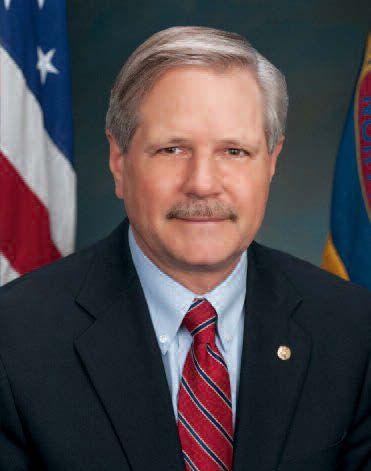
2 minute read
Bill gets at ‘STEM’ of workforce shortage
Proposed legislation seeks to increase STEM-related education, research opportunities
BY KRIS BEVILL
Abill introduced late last year by Sens. Amy Klobuchar, DMinn., and John Hoeven, R-N.D., seeks to address the nation’s skilled workforce shortage by encouraging more STEM (science, technology, engineering and math) education opportunities and collaboration between industry and higher education institutions.

“By cutting red tape for businesses and focusing on science, technology, engineering and math education, this legislation ensures that our businesses can invest in research and our workers have the skills they need to thrive in today’s competitive global economy,” Klobuchar said in a statement.
Hoeven says he co-sponsored the bill because STEM skill sets are in high demand in the nation’s job market and particularly in North Dakota, where STEM skills are required throughout the state’s robust and growing energy, value-added agriculture, advanced manufacturing and aviation industries. “North Dakota is actually the fastest-growing state in the nation in terms of growth for STEM-skilled jobs,” he says. “There’s an incredible number of jobs available — good, quality jobs — and that’s the skill set that’s needed to fulfill those jobs. First and foremost it’s about giving young people great opportunities for careers, and then it’s about filling the jobs needs we have in North Dakota and across the country.”

Specific provisions of the Innovate America Act include increasing the number of STEM high schools in the U.S. from 100 to 200, increasing the number of computer science teachers in elementary and secondary schools to support the nation’s growing need for computer programmers, expanding opportunities for undergraduate students to engage in STEM-related research projects by allowing students at 2-year and 4-year schools to participate, and expanding the benefits for businesses supporting research and development activities at universities.
According to Hoeven, under current law businesses funding research at universities may qualify for a research and development tax credit for up to 65 percent of the funds. The Innovate America Act proposes that 100 percent of those funds should qualify for the tax credit. Further, the bill would increase tax credits for businesses collaborating with higher education institutions and reduce regulatory burdens, making it simpler for small businesses to collaborate with universities on research and development, he says. According to the bill, improving and simplifying those types of tax credits would “deliver a powerful incentive for private sector innovation.”
The bill also offers export assistance to manufacturers with 500 employees or less, requiring the U.S. commerce department to identify the top 20 U.S. export industries and offer recommendations to further improve the competitiveness of those industries in the global market.
It is unclear when the Senate might vote on the bill, which was referred to the Committee on Health, Education, Labor and Pensions in late November. Hoeven says he is confident the bill will eventually pass, however, and that it could also be helpful in his efforts to gather a coalition of legislators interested in reforming existing STEM-related initiatives. “I think we can use it as a way to kind of reform some of the existing legislation and make it better,” he says. “I think if we can get people on-board with that approach we have a good opportunity to pass the legislation.” PB
Kris Bevill Editor, Prairie Business 701-306-8561, kbevill@prairiebizmag.com










